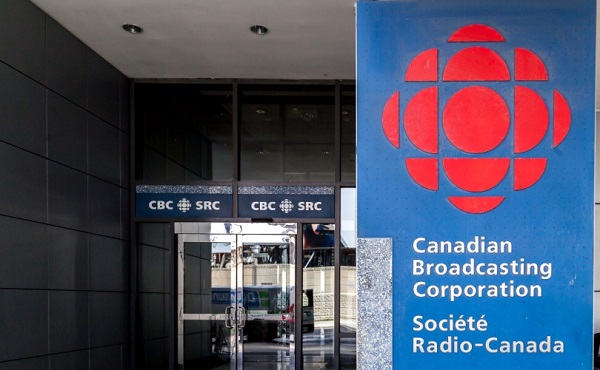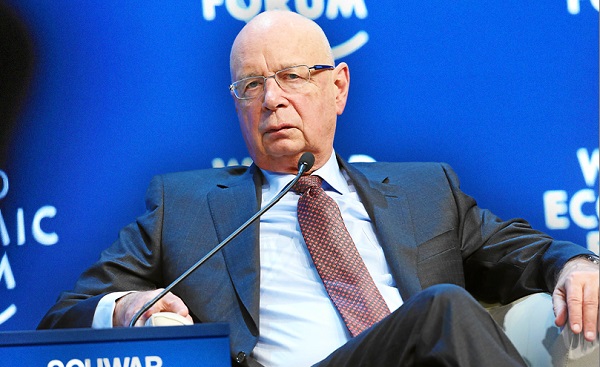Business
Liberals to increase CBC funding to nearly $2 billion per year

From LifeSiteNews
The Department of Canadian Heritage promised funding to offset the Canadian Broadcasting Corporation’s nearly 10 percent drop in ad revenue last year despite an audience share of 1.7 percent, meaning over 98 percent of the country is not watching the network.
The Liberal government has promised to spend millions of taxpayer dollars to compensate CBC-TV for ads that the network cannot sell.
According to information released January 20 by Blacklock’s Reporter, the Liberal-run Department of Canadian Heritage will give CBC millions more, bringing the network’s total parliamentary grant near $2 billion a year.
“The CBC has been grappling with a range of financial pressures that are challenging its ability to maintain programming and service levels,” Liberals argued, adding that their department will be “providing additional funding to make it less reliant on private advertising with a goal of eliminating advertising during news and other public affairs shows.”
“The CBC is a pillar of Canada’s creative economy, a key provider of programming made by and for Canadians and a significant source of trusted news and information,” Liberals claimed.
“This government is committed to ensuring the sustainability of the CBC so that it can continue to create public value and adapt to the needs and expectations of Canadians,” the department continued.
The increased government subsidies come after an October report found that CBC’s advertising revenue dropped nearly 10 percent last year.
Furthermore, CBC’s own quarterly report found that its network audience share is only 1.7%, meaning more than 98% of Canadians are not watching CBC.
However, Liberals have chosen to ignore the fact that Canadians are not watching CBC, instead spending millions of dollars to prop up the failing outlet.
Beginning in 2019, Parliament changed the Income Tax Act to give yearly rebates of 25 percent for each news employee in cabinet-approved media outlets earning up to $55,000 a year to a maximum of $13,750.
The Department of Canadian Heritage since admitted that the payouts are not even sufficient to keep legacy media outlets running and recommended that the rebates be doubled to a maximum of $29,750 annually.
Last November, Prime Minister Justin Trudeau again announced increased payouts for legacy media outlets that coincide with the leadup to the 2025 election. The subsidies are expected to cost taxpayers $129 million over the next five years.
That amount to the CBC is in addition to massive media payouts that already make up roughly 70 percent of its operating budget and total more than $1 billion annually.
However, many have pointed out that the obscene amount of money thrown at CBC by Liberals is a ploy to buy the outlet’s loyalty.
Furthermore, in October, Canadian Heritage Minister Pascale St-Onge’s department admitted that federally funded media outlets buy “social cohesion.”
Additionally, in September, House leader Karina Gould directed mainstream media reporters to “scrutinize” Conservative Party leader Pierre Poilievre, who has repeatedly condemned government-funded media as an arm of the Liberals.
Gould’s comments were in reference to Poilievre’s promise to defund the CBC if elected prime minister. Poilievre is a longtime critic of government-funded media, especially the CBC.
2025 Federal Election
Next federal government should end corporate welfare for forced EV transition

From the Fraser Institute
By Tegan Hill and Jake Fuss
Corporate welfare simply shifts jobs and investment away from other firms and industries—which are more productive, as they don’t require government funding to be economically viable—to the governments’ preferred industries and firms, circumventing the preferences of consumers and investors. And since politicians spend other people’s money, they have little incentive to be careful investors.
General Motors recently announced the temporary closure of its electric vehicle (EV) manufacturing plant in Ontario, laying off 500 people because its new EV isn’t selling. The plant will shut down for six months despite hundreds of millions in government subsides financed by taxpayers. This is just one more example of corporate welfare—when governments subsidize favoured industries and companies—and it’s time for the provinces and the next federal government to eliminate it.
Between the federal government and Ontario government, GM received about $500 million to help fund its EV transition. But this is just one example of corporate welfare in the auto sector. Stellantis and Volkswagen will receive about $28 billion in government subsidies while Honda is promised $5 billion.
More broadly, from 2007 to 2019, the last pre-COVID year of data, the federal government spent an estimated $84.6 billion (adjusted for inflation) on corporate welfare while provincial and local governments spent another $302.9 billion. And crucially, these numbers exclude other forms of government support such as loan guarantees, direct investments and regulatory privileges, so the actual cost of corporate welfare during this period was much higher.
Of course, politicians claim that corporate welfare benefits workers. Yet according to a significant body of research, corporate welfare fails to generate widespread economic benefit. Think of it this way—if the businesses that received subsidies were viable to begin with, they wouldn’t need government support. So unprofitable companies are kept in business through governments’ support, which can prevent resources, including investment and workers, from moving to profitable companies, hurting overall economic growth.
Put differently, rather than fuelling economic growth, corporate welfare simply shifts jobs and investment away from other firms and industries—which are more productive, as they don’t require government funding to be economically viable—to the governments’ preferred industries and firms, circumventing the preferences of consumers and investors. And since politicians spend other people’s money, they have little incentive to be careful investors.
Governments also must impose higher tax rates on everyone else to pay for corporate welfare. In turn, higher tax rates discourage entrepreneurship and business investment—again, which fuels economic growth. And the higher the tax rates, the more economic activity they discourage.
GM’s EV plant shut down once again proves that when governments try to engineer the economy with corporate welfare, workers will ultimately lose. It’s time for the provinces and the next federal government—whoever it may be—to finally put an end to this costly and ineffective policy approach.
Business
Hudson’s Bay Bid Raises Red Flags Over Foreign Influence

From the Frontier Centre for Public Policy
A billionaire’s retail ambition might also serve Beijing’s global influence strategy. Canada must look beyond the storefront
When B.C. billionaire Weihong Liu publicly declared interest in acquiring Hudson’s Bay stores, it wasn’t just a retail story—it was a signal flare in an era where foreign investment increasingly doubles as geopolitical strategy.
The Hudson’s Bay Company, founded in 1670, remains an enduring symbol of Canadian heritage. While its commercial relevance has waned in recent years, its brand is deeply etched into the national identity. That’s precisely why any potential acquisition, particularly by an investor with strong ties to the People’s Republic of China (PRC), deserves thoughtful, measured scrutiny.
Liu, a prominent figure in Vancouver’s Chinese-Canadian business community, announced her interest in acquiring several Hudson’s Bay stores on Chinese social media platform Xiaohongshu (RedNote), expressing a desire to “make the Bay great again.” Though revitalizing a Canadian retail icon may seem commendable, the timing and context of this bid suggest a broader strategic positioning—one that aligns with the People’s Republic of China’s increasingly nuanced approach to economic diplomacy, especially in countries like Canada that sit at the crossroads of American and Chinese spheres of influence.
This fits a familiar pattern. In recent years, we’ve seen examples of Chinese corporate involvement in Canadian cultural and commercial institutions, such as Huawei’s past sponsorship of Hockey Night in Canada. Even as national security concerns were raised by allies and intelligence agencies, Huawei’s logo remained a visible presence during one of the country’s most cherished broadcasts. These engagements, though often framed as commercially justified, serve another purpose: to normalize Chinese brand and state-linked presence within the fabric of Canadian identity and daily life.
What we may be witnessing is part of a broader PRC strategy to deepen economic and cultural ties with Canada at a time when U.S.-China relations remain strained. As American tariffs on Canadian goods—particularly in aluminum, lumber and dairy—have tested cross-border loyalties, Beijing has positioned itself as an alternative economic partner. Investments into cultural and heritage-linked assets like Hudson’s Bay could be seen as a symbolic extension of this effort to draw Canada further into its orbit of influence, subtly decoupling the country from the gravitational pull of its traditional allies.
From my perspective, as a professional with experience in threat finance, economic subversion and political leveraging, this does not necessarily imply nefarious intent in each case. However, it does demand a conscious awareness of how soft power is exercised through commercial influence, particularly by state-aligned actors. As I continue my research in international business law, I see how investment vehicles, trade deals and brand acquisitions can function as instruments of foreign policy—tools for shaping narratives, building alliances and shifting influence over time.
Canada must neither overreact nor overlook these developments. Open markets and cultural exchange are vital to our prosperity and pluralism. But so too is the responsibility to preserve our sovereignty—not only in the physical sense, but in the cultural and institutional dimensions that shape our national identity.
Strategic investment review processes, cultural asset protections and greater transparency around foreign corporate ownership can help strike this balance. We should be cautious not to allow historically Canadian institutions to become conduits, however unintentionally, for geopolitical leverage.
In a world where power is increasingly exercised through influence rather than force, safeguarding our heritage means understanding who is buying—and why.
Scott McGregor is the managing partner and CEO of Close Hold Intelligence Consulting.
-

 2025 Federal Election1 day ago
2025 Federal Election1 day agoOttawa Confirms China interfering with 2025 federal election: Beijing Seeks to Block Joe Tay’s Election
-

 2025 Federal Election1 day ago
2025 Federal Election1 day agoHow Canada’s Mainstream Media Lost the Public Trust
-

 2025 Federal Election22 hours ago
2025 Federal Election22 hours agoBREAKING: THE FEDERAL BRIEF THAT SHOULD SINK CARNEY
-

 2025 Federal Election1 day ago
2025 Federal Election1 day agoReal Homes vs. Modular Shoeboxes: The Housing Battle Between Poilievre and Carney
-

 2025 Federal Election23 hours ago
2025 Federal Election23 hours agoCHINESE ELECTION THREAT WARNING: Conservative Candidate Joe Tay Paused Public Campaign
-

 COVID-191 day ago
COVID-191 day agoNearly Half of “COVID-19 Deaths” Were Not Due to COVID-19 – Scientific Reports Journal
-

 John Stossel1 day ago
John Stossel1 day agoClimate Change Myths Part 2: Wildfires, Drought, Rising Sea Level, and Coral Reefs
-

 Business20 hours ago
Business20 hours ago‘Great Reset’ champion Klaus Schwab resigns from WEF







